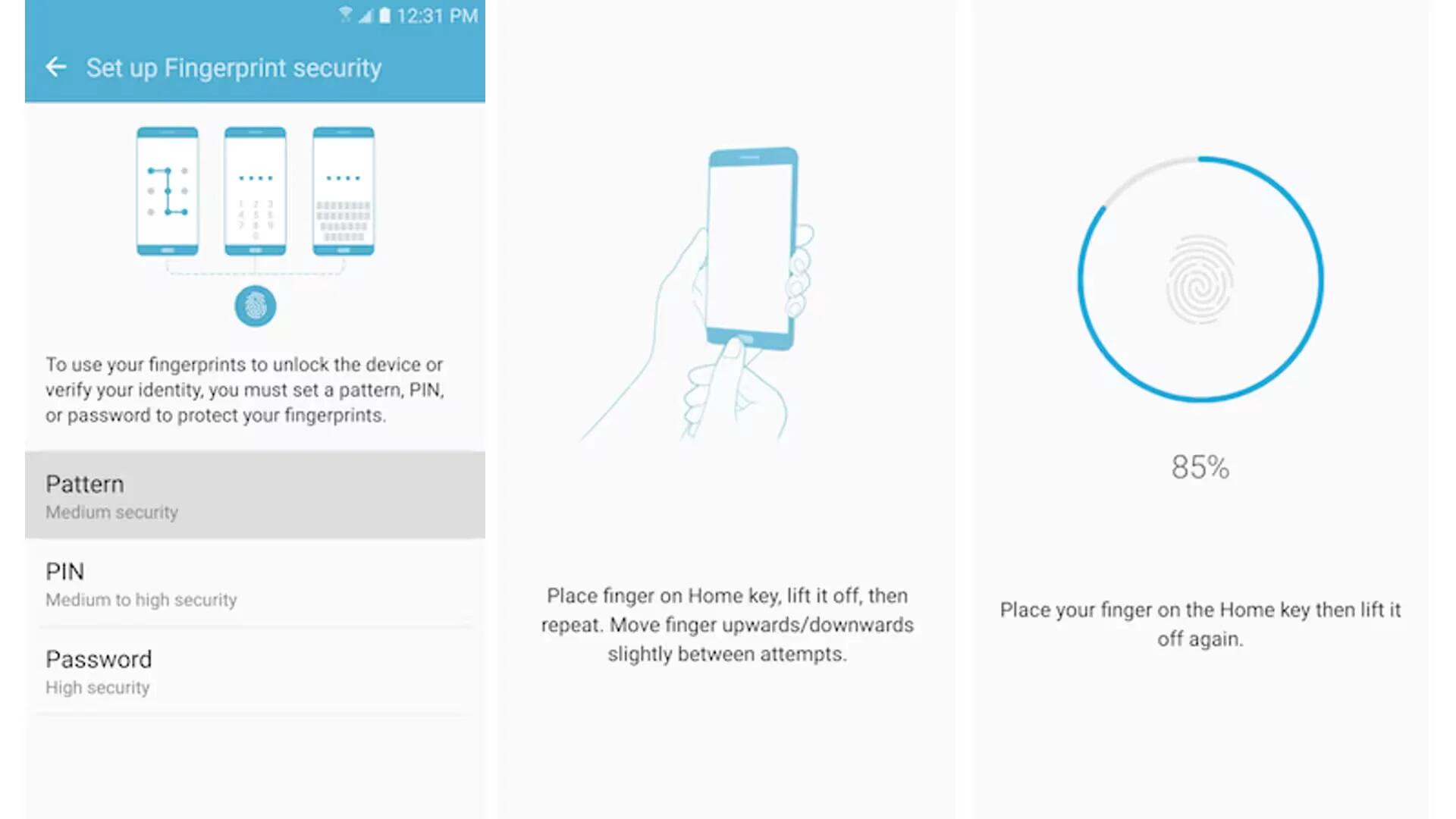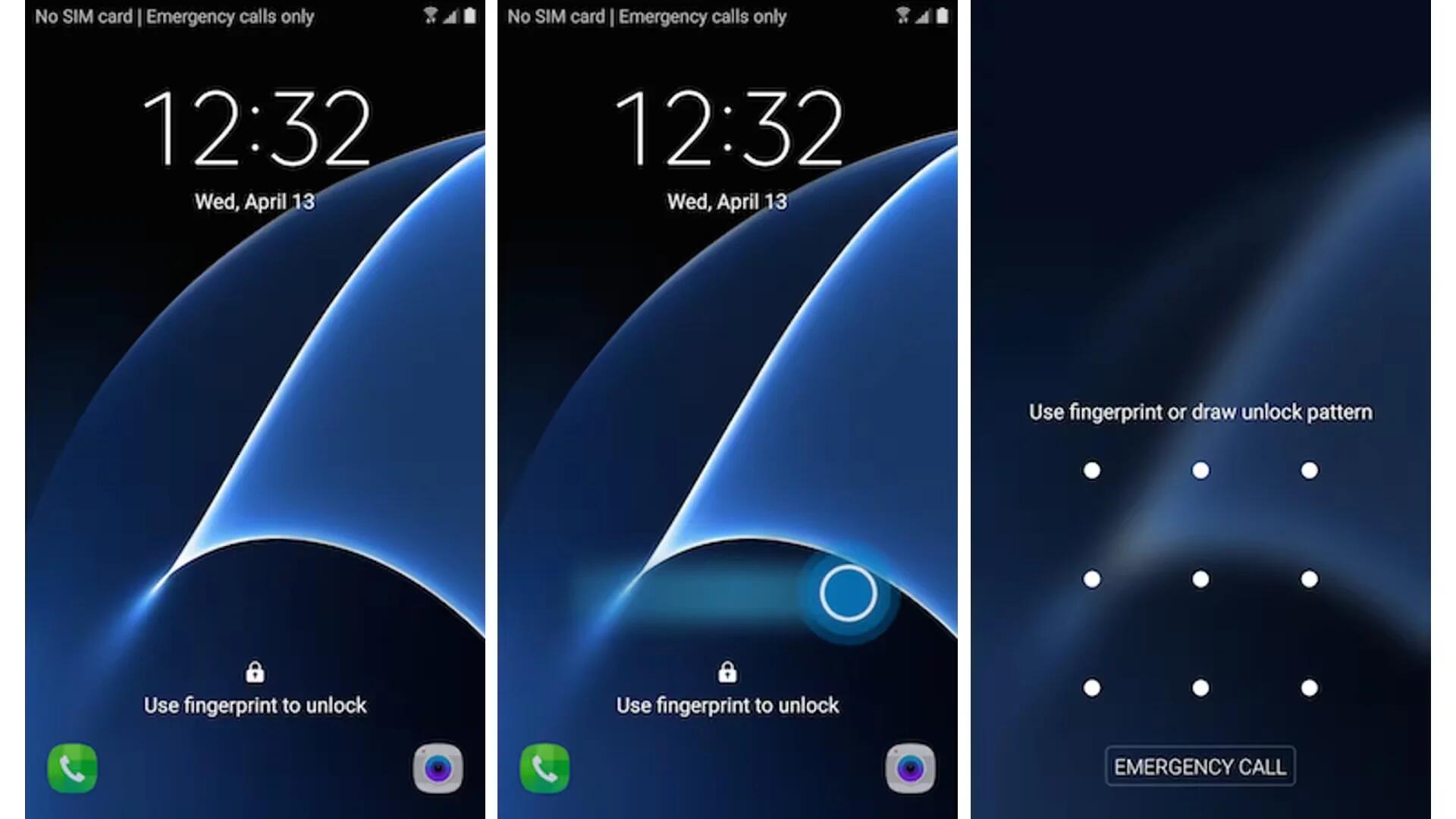Typing a password into your smartphone is, like, so 2014. With support for fingerprint sensors in your Galaxy S7 and S7 Edge, it is easy to get spoiled by the ease of unlocking something with a touch of your finger. Your phone’s fingerprint scanner is quite literally always at your fingertips – so why not use it to improve your security and privacy?
The fingerprint recognition technology has moved on a lot from the early days too, becoming faster and more accurate in their readings. Here we will see how to effectively use Galaxy S7’s fingerprint scanner to improve the security of our device.
Fingerprint recognition
In order for fingerprint recognition to function, your fingerprint information needs to be registered and stored in your device. After registering, you can set the device to use your fingerprint for the features below:
- Screen lock
- Web sign-in
- Verify Samsung account
- Samsung Pay
[alert type=”info” icon-size=”normal”]
- This feature may not be available depending on the region or service provider.
- Fingerprint recognition uses the unique characteristics of each fingerprint to enhance the security of your device. The likelihood of the fingerprint sensor confusing two different fingerprints is very low. However, in rare cases where separate fingerprints are very similar the sensor may recognize them as identical.
- If you use your fingerprint as a screen lock method, your fingerprint cannot be used to unlock the screen after restarting the device. You must unlock the device using a pattern, PIN, or password you set when registering the fingerprint.
- If your fingerprint is not recognized, you must take the device to a Samsung Service Center to have it reset. Then, you must re-register your fingerprints.
[/alert]
For better fingerprint recognition
When you scan your fingerprints on the device, be aware of the following conditions that may affect the feature’s performance:
- The Home key contains a fingerprint recognition sensor. Ensure that the Home key is not scratched or damaged by metal objects, such as coins, keys, and necklaces.
- The screen protector supplied with the device may cause the fingerprint recognition sensor to malfunction. Remove the screen protector to improve fingerprint sensitivity.
- Ensure that the fingerprint recognition area and your fingers are clean and dry.
- The device may not recognize fingerprints that are affected by wrinkles or scars.
- The device may not recognize fingerprints from small or thin fingers.
- If you bend your finger or use a fingertip, the device may not recognize your fingerprints. Make sure to cover the entire Home key with your finger.
- To improve recognition performance, register fingerprints of the hand used most often to perform tasks on the device.
- In dry environments, static electricity can build up in the device. Avoid using this feature in dry environments or before using the feature, discharge static electricity by touching a metal object.
Registering fingerprints

- On the Settings screen, tap Lock screen and security > Fingerprints.
- Unlock the screen using the preset screen lock method. If you have not set a screen lock method, create one.
- Tap Add fingerprint.
- Place your finger on the Home key.
- After the device detects your finger, lift it up and place it on the Home key again. Repeat this action by moving your finger upwards or downwards until the fingerprint is registered.
When a fingerprint lock pop-up window appears, tap ENABLE to use your fingerprint to unlock the screen.
Deleting fingerprints
You can delete registered fingerprints.
- On the Settings screen, tap Lock screen and security > Fingerprints.
- Unlock the screen using the preset screen lock method.
- Tap EDIT.
- Tick fingerprints to delete and tap REMOVE.
Verifying the Samsung account password
Use fingerprints to verify your Samsung account password. You can use a fingerprint instead of entering your password, for example, when you purchase content from Galaxy Apps.
- On the Settings screen, tap Lock screen and security > Fingerprints.
- Unlock the screen using the preset screen lock method.
- Tap the Verify Samsung account switch to activate it.
- Sign in to your Samsung account.
Using fingerprints to sign in to accounts
You can use your fingerprints to sign in to webpages that support password saving.
[alert type=”info” icon-size=”normal”]This feature is only available for webpages that you access via the Internet app.[/alert]
- On the Settings screen, tap Lock screen and security > Fingerprints.
- Unlock the screen using the preset screen lock method.
- Tap the Web sign-in switch to activate it.
- Open a webpage that you want to sign in to with a fingerprint.
- Enter your user name and password, and then tap the webpage’s sign in button.
- Tick Sign in using your fingerprints and tap REMEMBER.
You can use your fingerprint to verify your account and password to sign in to the webpage.
Using fingerprints with Samsung Pay
You can use fingerprints with Samsung Pay to make payments quickly and securely. Refer to Samsung Pay for more information.
[alert type=”info” icon-size=”normal”]Samsung Pay may not be available depending on the region or service provider.[/alert]
Unlocking the screen with fingerprints
You can unlock the screen with your fingerprint instead of using a pattern, PIN, or password.

- On the Settings screen, tap Lock screen and security > Fingerprints.
- Unlock the screen using the preset screen lock method.
- Tap the Fingerprint unlock switch to activate it.
- On the locked screen, place your finger on the Home key and scan your fingerprint.
